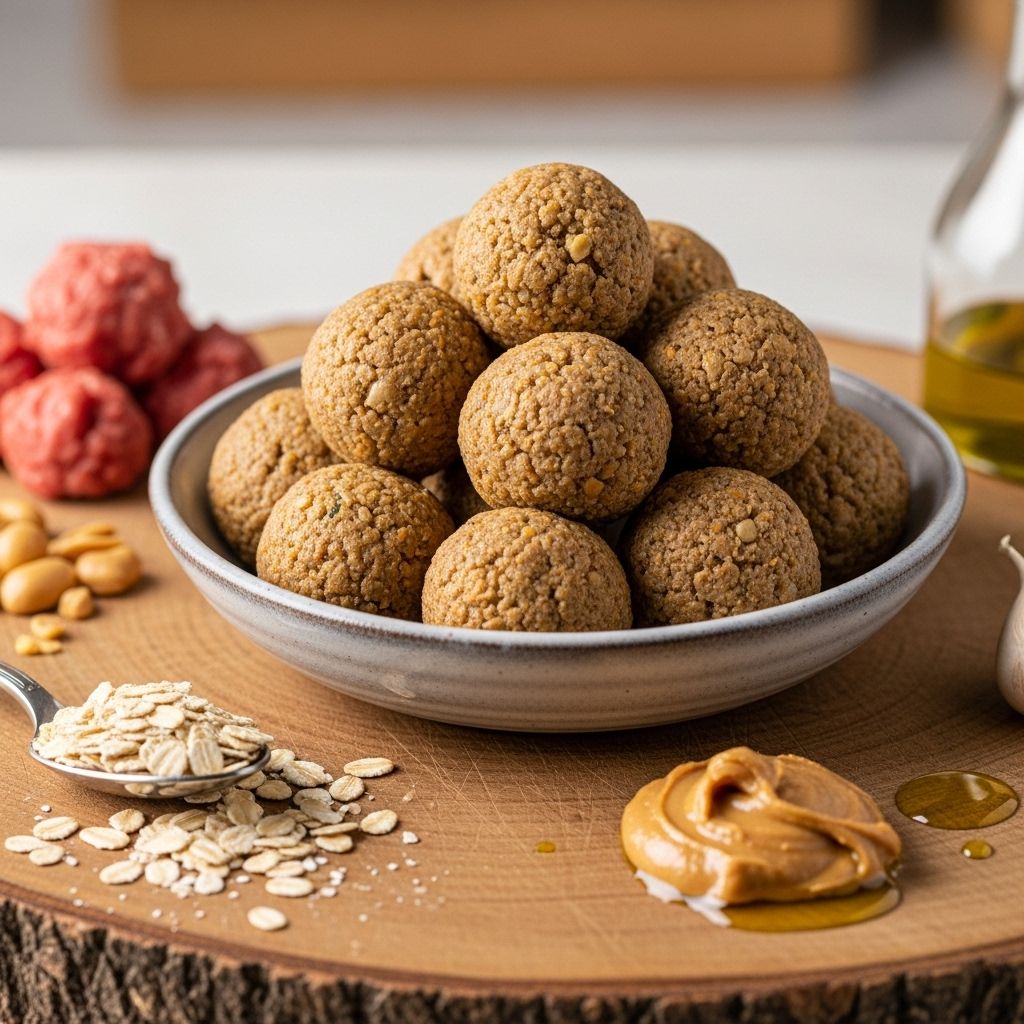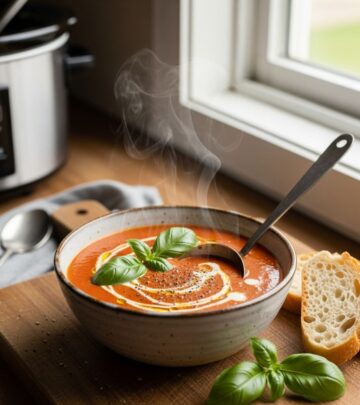Satin Balls: High-Calorie Recipe to Help Underweight Dogs Gain Weight
A calorie-dense, raw recipe designed for underweight dogs, packed with nutrients to support healthy weight gain and energy.

Satin Balls have become a staple recipe among dog owners, breeders, and rescuers who need an effective, high-calorie supplement to help underweight dogs gain weight rapidly. Originally popularized on pet forums and later shared widely online, Satin Balls provide a nutritious blast of calories, fat, protein, and micronutrients in a form that most dogs find irresistible. If you are caring for a dog who is struggling to maintain or regain a healthy body condition, this guide offers a complete overview of Satin Balls—from ingredients to feeding tips, safety considerations, and frequently asked questions.
What Are Satin Balls?
Satin Balls are a raw food mixture, typically rolled into bite-sized balls, specifically crafted to support dogs who need a calorie boost. The blend is rich in fats and proteins and is intended for dogs that are underweight due to metabolism, illness, or high activity levels. While unusually dense in calories, Satin Balls are not designed as a daily meal replacement for healthy dogs. Instead, they should be used as a supplement, treat, or short-term intervention for dogs needing to gain weight quickly.
Why Use Satin Balls?
- Promotes Quick Weight Gain: Specially formulated for dogs who require rapid weight gain, such as rescue cases or high-energy working breeds.
- Easy to Digest: Most dogs, even those with a reduced appetite, are enticed by the raw aroma and flavor.
- Customizable: Can be adapted for dogs with allergies or sensitivities (e.g., grain-free versions).
- Convenient to Prepare and Store: Portions can be made in bulk and stored in the refrigerator or freezer for convenient feeding.
Satin Balls Ingredients
The traditional Satin Balls recipe relies on common, affordable ingredients to provide dense calories, essential fats, and vitamins. Below are the standard and alternative ingredient options:
Traditional Satin Balls Recipe
| Ingredient | Purpose |
|---|---|
| 10 lbs ground beef (75-80% lean) | Main source of animal protein and fat |
| 1 box Total cereal or Shredded Wheat (no raisins) | Carbohydrates, fiber, and vitamins |
| 1 box (large) oatmeal (uncooked) | Additional fiber, helps bind the mix |
| 1 jar wheat germ | Vitamin E and healthy fats |
| 1 1/4 cup olive oil | Dense calorie and omega-9 fat source |
| 1 1/4 cup unsulphured molasses | Natural sugar and mineral source |
| 10 raw eggs with shells | Protein, fat, calcium from shells |
| 10 envelopes unflavored gelatin | Supports joint health and binds ingredients |
| Pinch of salt | Electrolyte balance |
Smaller-Batch Version
- 1 lb ground beef
- 1 cup Total or Shredded Wheat cereal (no raisins)
- 1 cup oatmeal
- 1/4 cup wheat germ
- 1/4 cup olive oil
- 1/4 cup unsulphured molasses
- 1 raw egg with shell
- 1 envelope unflavored gelatin
- Pinch of salt
Grain-Free Satin Balls
- 10 lbs ground beef
- 1 large tub (approx. 16 oz) of 4% fat cottage cheese
- 500g (approx. 18 oz) cream cheese
- 1 1/4 cup olive oil
- 1 1/2 cup unsulphured molasses
- 10 raw eggs with shells
- 10 envelopes unflavored gelatin
- Pinch of salt
Note: Always avoid using any cereal containing raisins, which are toxic to dogs.
How to Make Satin Balls
- In a very large, clean mixing container or bowl, combine all dry ingredients (cereal, oatmeal/wheat germ or cheese, gelatin, salt) and mix thoroughly.
- Add the ground beef and continue mixing.
- Crack the raw eggs (including the shells, if using) into the mixture.
- Pour in olive oil and molasses. For large batches, mix with gloved hands.
- Continue mixing until all ingredients are evenly distributed and sticky, but not runny.
- Form the mixture into small balls (golf ball sized or appropriate for your dog’s mouth):
- Use a spoon or scoop for consistent size.
- Place on a baking sheet lined with parchment paper if freezing.
- Feed immediately, refrigerate, or freeze for later use.
Serving, Storage, and Safety Tips
Serving Satin Balls
- Serve raw. Satin Balls are not meant to be cooked, since cooking can destroy nutrients and change the texture.
- Start with one or two balls as a treat or meal supplement, and monitor your dog’s weight gain and appetite.
- Do not replace your dog’s regular balanced diet with Satin Balls unless instructed by your veterinarian.
- For small dogs or puppies, break balls into smaller pieces or make tiny portions to avoid choking hazard.
Safe Handling
- Mix raw ingredients using gloves to avoid bacterial contamination (salmonella/E. coli risk with raw meat/eggs).
- Clean all surfaces and tools thoroughly after preparation.
- Do not allow finished Satin Balls to stay at room temperature longer than necessary; refrigerate promptly.
Storing Satin Balls
- Refrigeration: Store prepared balls in an airtight container in the refrigerator. Use within 3 days.
- Freezing: Satin Balls freeze well for up to 3 months.
- Lay the balls out on a lined baking sheet, ensuring they don’t touch.
- Once frozen solid, transfer to a freezer-safe bag or container.
- Defrost overnight in the fridge before serving.
Nutritional Profile and Benefits
Satin Balls offer a unique nutritional profile which makes them both calorie-dense and appealing to picky eaters:
- High Protein: From ground beef and eggs; supports muscle health.
- High Fat: Healthy animal and plant fats provide compact energy sources.
- Trace Minerals and Vitamins: Molasses, wheat germ, eggshell, and cereal add B vitamins, iron, magnesium, calcium, and vitamin E.
- Joint Support: Gelatin can help with joint and skin health.
These characteristics make Satin Balls exceptional for dogs needing fast, restorative nourishment. However, for overweight or sedentary dogs, this recipe may be excessive and lead to unwanted weight gain.
Special Considerations
- Veterinary Guidance: Always consult your veterinarian before introducing any high-calorie supplement, especially for puppies, seniors, or dogs with existing medical conditions.
- Grain Sensitivities: Use the grain-free Satin Balls adaptation for dogs with allergies or digestive sensitivities.
- Long-Term Use: Satin Balls are not intended as a permanent dietary solution. Discontinue or reduce when the dog reaches a healthy body weight.
Common Questions About Satin Balls
What size and amount should I feed my dog?
Satin Balls should be given as a treat or supplement, not a meal replacement. Most owners start with several small balls per day for large dogs, and adjust based on the dog’s acceptance and rate of weight gain. For toy or small-breed dogs, offer miniature portions and monitor intake. Always observe your dog for digestive upset or excessive weight gain, and consult your vet if unsure.
Can I cook Satin Balls for my dog?
The recipe is designed to be served raw in order to preserve nutrients and maintain a palatable texture. Cooking is not recommended as it destroys some beneficial enzymes and may change the nutritional balance. If you have concerns about raw meat, discuss alternatives with your veterinarian.
Are Satin Balls suitable for all dogs?
Satin Balls are specifically for dogs with urgent calorie needs, such as those recovering from illness, very active working dogs, or newly rescued underweight animals. Healthy, non-underweight dogs should not be routinely fed Satin Balls due to the risk of obesity and associated health problems.
How should I store leftovers?
Prepared Satin Balls can be kept in the refrigerator for up to three days. For longer storage, freeze individual balls on a lined tray and transfer to airtight bags or containers. They can be frozen safely for up to three months.
Are there ingredient substitutes?
- Cereal: Use any unsweetened, raisin-free whole-grain cereal, or leave out for grain-free diet adaptations.
- Meat: Ground turkey or other meats can substitute beef, but use similar fat content for calorie needs.
- Molasses: Blackstrap unsulphured is preferred, but honey or maple syrup can be used in moderation. Avoid artificial sweeteners entirely.
Satin Balls Recipe: At-a-Glance
| For | Purpose | Key Ingredients |
|---|---|---|
| Underweight/Rescue Dogs | Rapid weight gain and energy recovery | Ground beef, cereals, molasses, eggs, oil |
| Working/Performance Dogs | Extra calorie support during intense activity/training | Ground beef, oatmeal, wheat germ, oil, molasses |
| Dogs with Grain Allergy | Weight gain without grain ingredients | Beef, cottage cheese, cream cheese, oil, eggs |
Frequently Asked Questions (FAQs)
Q: Can Satin Balls be given to puppies?
A: Yes, but in very controlled and small quantities. Always consult your veterinarian before feeding to puppies, as their nutritional needs are different from adults and overfeeding in youth can lead to health issues.
Q: How soon will I see weight gain results?
A: Many dogs gain noticeable weight within 1–2 weeks, but this can vary depending on breed, size, metabolism, and activity level. Monitor progress and reduce or discontinue once the target weight is reached.
Q: Are Satin Balls a complete dog food?
A: No. While they are nutritionally dense, they lack the balance of vitamins and minerals that a commercial or veterinarian-designed complete diet provides. Do not feed Satin Balls as a sole food source long-term.
Q: My dog has allergies. How can I adjust the recipe?
A: Use the grain-free adaptation, and avoid any ingredient that has previously caused your dog a reaction. Always check with your veterinarian before introducing new foods if your dog is known to have allergies or sensitivities.
Q: Can cats eat Satin Balls?
A: This recipe is formulated for canine metabolism and caloric needs, not for cats. Cats have different nutritional requirements—do not feed Satin Balls to cats.
Tips for Success
- Always use fresh, high-quality ingredients to minimize contamination risk.
- Monitor your dog’s weight and body condition weekly while supplementing with Satin Balls.
- Adjust quantity as soon as optimal weight is reached to avoid excessive gain.
- Discuss any sudden or rapid weight loss/gain with your veterinarian to rule out underlying health conditions.
- Consider preparing a smaller batch for trial. Once you are satisfied with how your dog responds, prepare larger batches for freezing and convenience.
Conclusion
Satin Balls offer a proven, straightforward nutritional supplement for underweight or high-needs dogs. Whether you’re rescuing an emaciated pet, supporting a working dog, or looking for a calorie-dense treat, this recipe can be tailored to fit your canine companion’s individual needs. Always consult with a pet nutritionist or veterinarian for best results, especially when making significant changes to your dog’s diet. With care and close monitoring, Satin Balls can help restore your dog’s vitality and get them back to their healthiest weight quickly and safely.
Read full bio of medha deb












